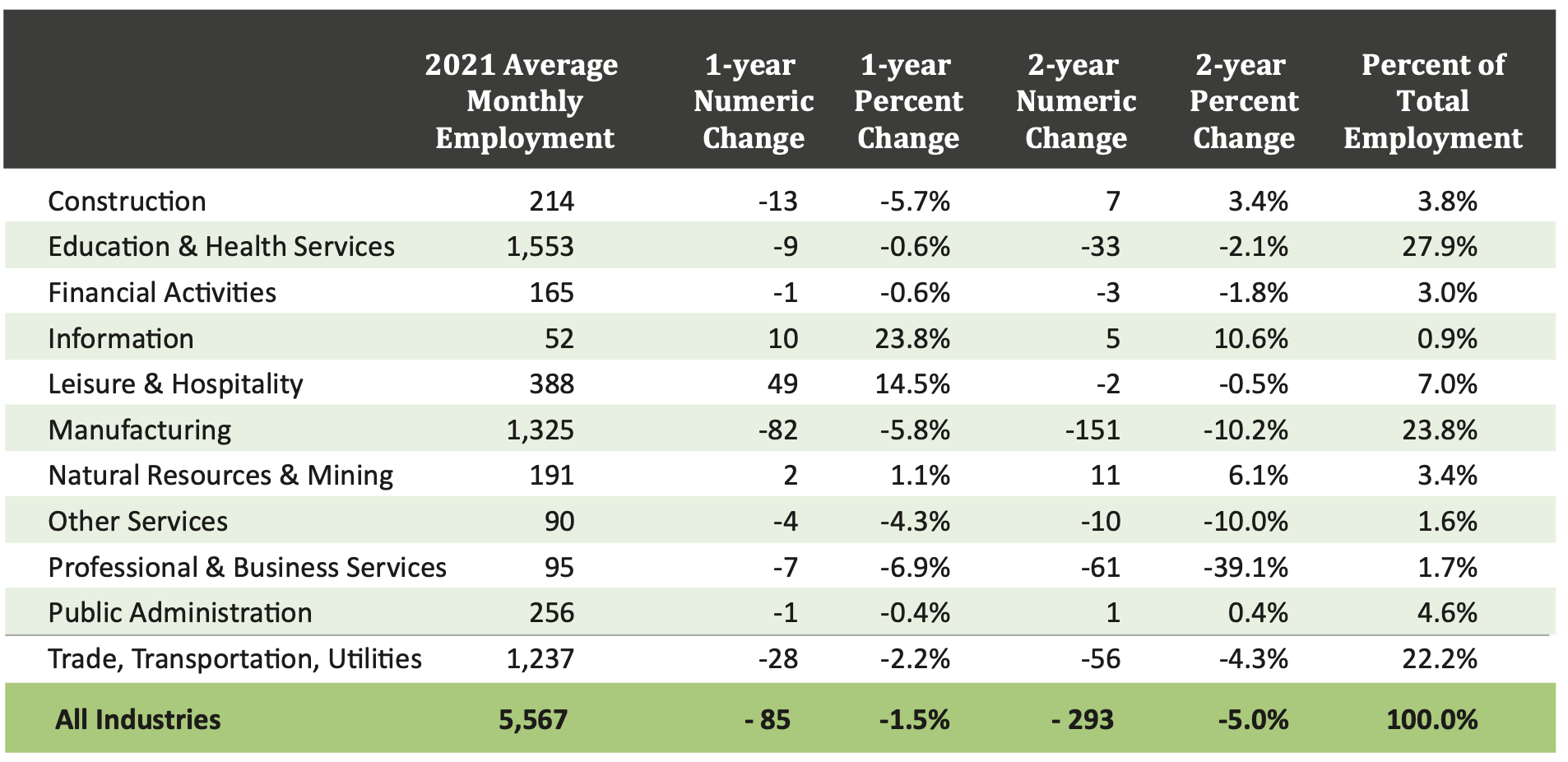Richland County
Richland County has 17,282 residents and is the 57th most populous county in Wisconsin. The overall population shrunk in the past two years of the 2020s, decreasing by 22 people -0.1% which is lower than the state’s rate of 0.9%. A significant portion of that decline occurred in Richland Center, which declined by 71 people from 2020 to 2022, the fastest rate of any municipality in the county. The 10 largest municipalities account for 72.9% of Richland County’s total population. Together, these municipalities shrunk by 43 individuals, a 0.3% decline. The largest municipalities are shrinking at a faster rate than the county overall.
Richland County’s unemployment rate spiked to 12% in April 2020, caused by COVID-19. This was slightly lower than the state overall, which had a 14.1% unemployment rate. Unlike the slow recovery following the Great Recession, the period of high unemployment after COVID-19 was significantly shorter. By September 2020, the unemployment rate was only higher by a single percentage point than September 2019. A year later, by September 2021, the unemployment rate was 2.6%, dipping below September’s pre-pandemic unemployment rate. These low unemployment rates near the end of 2021 and 2022 point to the tight state and national labor market. Indicative of this, Richland County’s unemployment rate reached 2% in December 2022.
Employment Change by Industry

The second fastest-growing industry was leisure and hospitality, which added 49 jobs for a 14.4% growth between 2020 and 2021. The leisure and hospitality industry’s employment was just short of its 2019 employment level by 0.5%. This highlights just how dramatic an effect the COVID-19 pandemic had – and continues to have – on the leisure and hospitality industry in Richland County. While leisure and hospitality was able to mostly bounce back, professional and business services has fared the worst since the onset of COVID-19 losing 61 jobs for a 39.1% decline from 2019 to 2021.
Transportation
In Richland County, 88.1% of people drive to work, with 79.6% of those commuting alone. This is only marginally different from Wisconsin overall. The county has 35.8% residents working in another county, and 35% of workers in Richland County live elsewhere. This makes sense given Richland County’s proximity to the larger Sauk County. Despite the distance, Dane County also pulls in residents from Richland County. While COVID-19 may affect the long-term prevalence of remote work, many jobs will still require physical presence. Transportation as a condition of work leads to a conflict: qualified individuals could fill a job if they had transportation and could afford transportation if they had a job.
Housing
In Richland County, 38.7% of renters and 30.7% of homeowners paid more than 30% of their income on housing. While Richland is more affordable for renters, it is noticeably more expensive for homeowners. Home values and monthly rent increases accelerated between 2020 and 2022, suggesting that the issue could worsen. Ways to reduce this share would be to provide more housing at a lower cost and increase earnings.
Richland County contains a significantly higher share of homes built before 1970 compared to the state. There’s also a slightly lower share of new homes than the state. This makes sense given Richland County’s population has been dropping since 2007. With little population growth there is a lower demand for new homes compared to Wisconsin. Communities have a central role to play in improving the housing situation though updating zoning laws, building multi-family housing and making affordable single family housing developments attractive to develop.
Child Care
Childcare is slightly less expensive than the state in Richland County. Bu child care costs remain high, with monthly costs ranging from $512 for a school-age child to $617 for an infant. That means the cost of infant care is 15.5% of monthly median pre-tax income of a truck driver in Richland County. Childcare availability is also a barrier to employment for Wisconsin families. According to the YoungStar provider database, which tracks 82% of childcare providers in the state, Richland County has three childcare providers for a potential capacity of 34 children. When compared to the population of children under 14, Richland County has one slot available for every 100 children, this level is lower than the state’s capacity. Even families that have childcare struggle with access disruptions. Easing the cost and access burden would allow parents to participate in the labor market more. Employers could also improve participation by providing flexibility to employees with childcare responsibilities.
